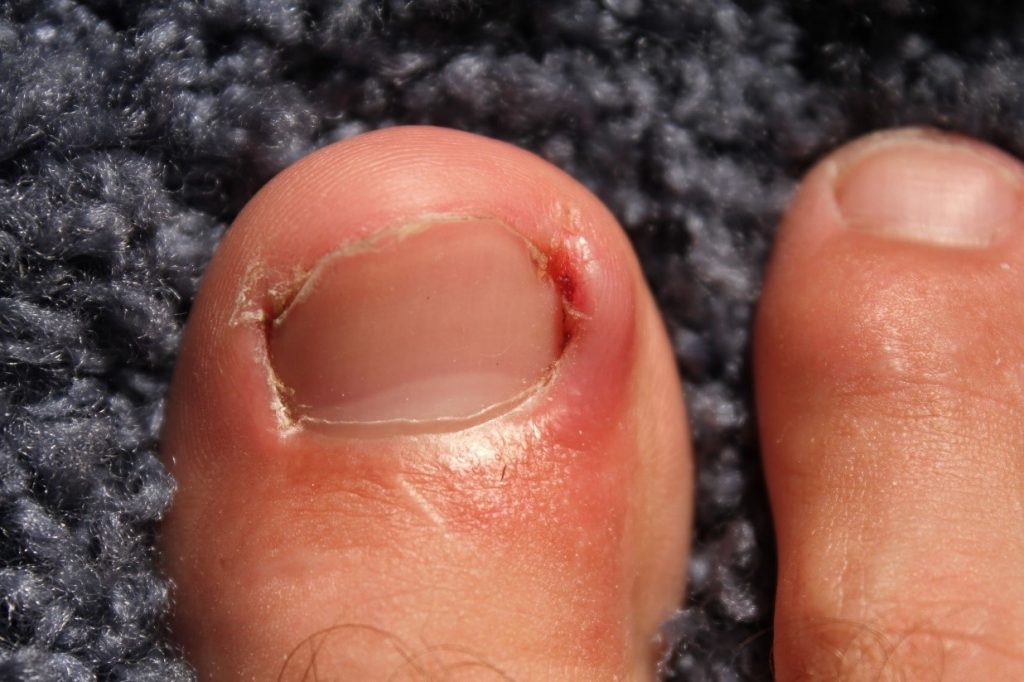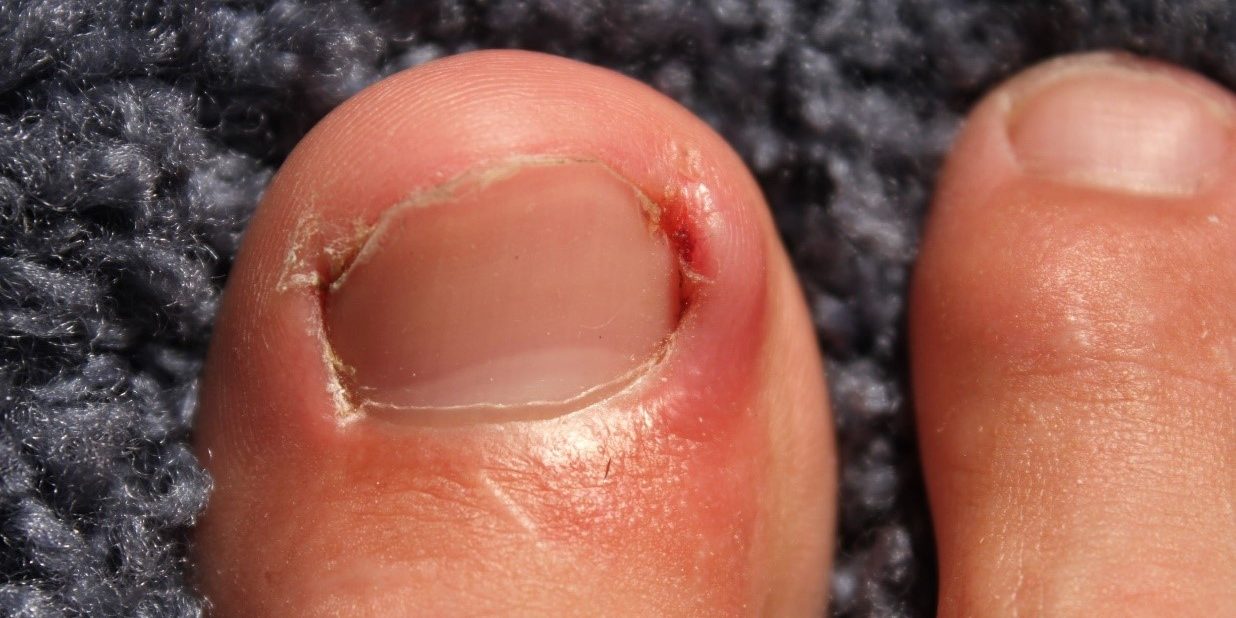WHAT IS AN INGROWN TOENAIL?
An ingrown toenail occurs when the edge of the toenail becomes embedded in the skin. Ingrown toenails can cause pain that will stop you from keeping active.
WHAT DOES IT LOOK LIKE?
In the early stage of an ingrown toenail the surrounding skin may look red, swollen or thickened. The toe is usually painful to touch in this area. There may also be blood and yellow or white pus.

WHAT CAUSES INGROWN TOENAILS?
There are several possible causes of an ingrown nail.
Incorrect cutting
In general, toenails should be cut straight across. When the toenail is cut down either side, a piece of nail will often be left behind which will embed into the skin as it grows out. This may also happen when nails are picked or torn rather cut with clippers.
Unsuitable footwear
Wearing shoes that are too tight and cause crowding of the toes may cause an ingrown toenail due to trauma to the surrounding tissues and the nail bed.
Related read: Will An Ingrown Toenail Eventually Grow Out?
Trauma
Blunt force trauma or repeated trauma such as toes jamming against the front of the shoe may cause inflammation to the surrounding tissue and result in an ingrown toenail.
Toe and nail anatomy
Some toe and nail shapes more commonly develop ingrown toenails. For instance, nails that grow in a curved direction constantly pressing onto the surrounding skin will often result in an ingrown toenail. Such curved or involuted nails are difficult to trim correctly without causing pain and infection.
Toes that are hammered or bent tend to develop ingrown toenails from excessive shoe pressure that occurs at the nail. People with more skin or soft tissue either side of the toenail may also be predisposed to ingrowing nails.
HOW DO I TREAT IT?
It is important to never treat an ingrown toenail yourself. You should always see a podiatrist for treatment.
Left untreated, an ingrown toenail will lead to ongoing pain and infection.
In patients with medical conditions such as diabetes and peripheral vascular disease neglecting and ingrown toenail can lead to serious complications such as below-knee amputation.
It is especially important for people with diabetes or poor circulation to seek treatment early in order to prevent further complications, including amputation.
Your podiatrist, in most cases, will trim the nail edge to make the toe comfortable and prevent a recurrence. An antiseptic dressing will also be applied to assist healing. Antibiotics may also be needed and if your podiatrist has Endorsement for Schedule Medicines, they can write a prescription for you.
In cases where the infection or pain continues, a simple ingrown toenail surgery may be performed under a local anaesthetic to permanently remove a small portion of the nail.
HOW TO PREVENT INGROWN TOENAILS
- Practice good foot hygiene.
- Cut your toenails straight across, making sure you can see the edges of each nail.
- Use a file to reduce sharp edges if necessary.
- Never cut your toenails down the side.
- If you have difficulty cutting your own nails seek the advice of a podiatrist.
- Make sure your shoes are the correct size for your feet.
If you have an ingrown toenail, make an appointment at Adelaide Foot and Ankle so we can help you in keeping you active.






